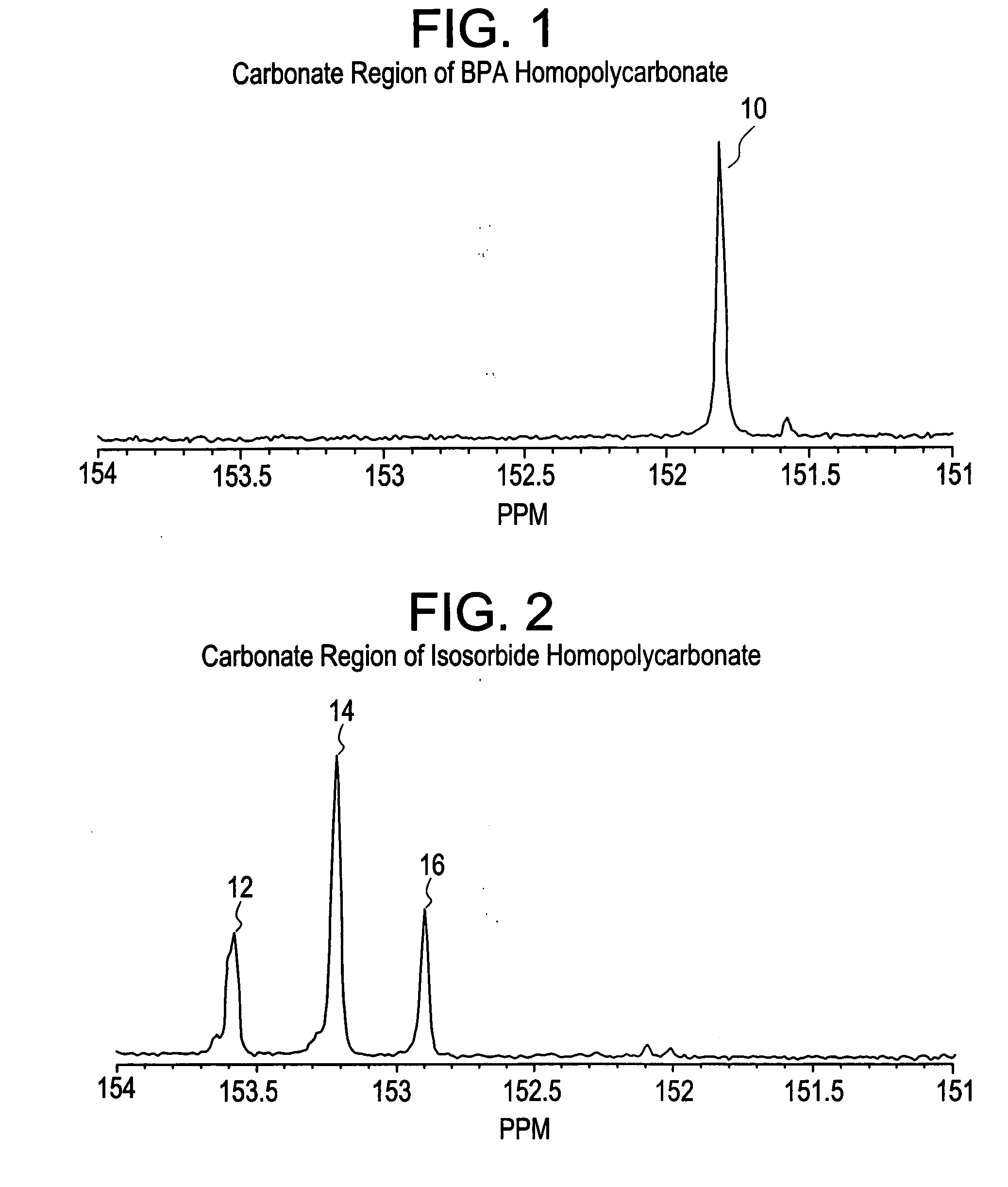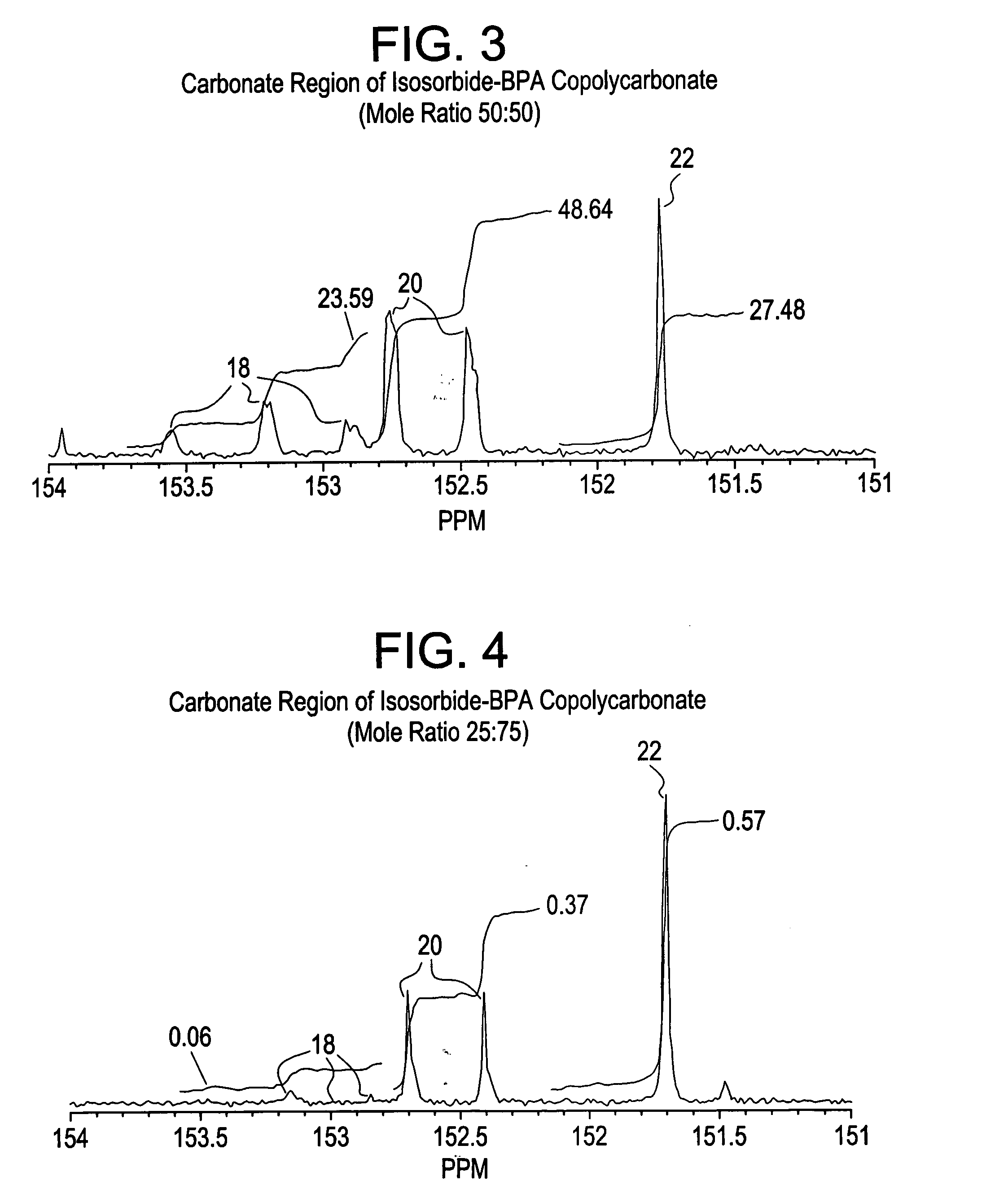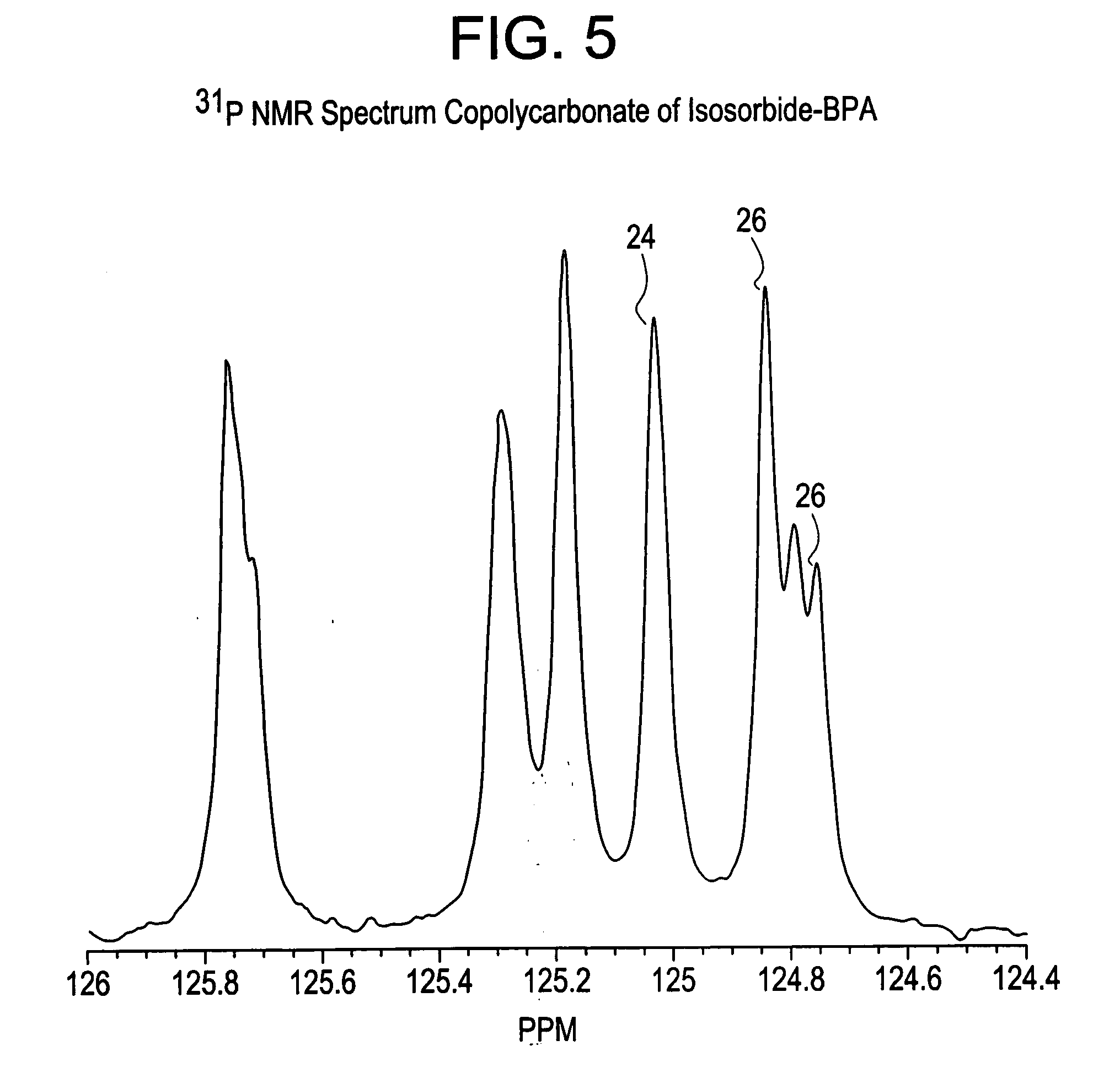Aliphatic diol polycarbonates and their preparation
a technology of aliphatic diol and polycarbonate, which is applied in the field of aliphatic polycarbonates and aliphaticaromatic polycarbonates and their preparation, can solve the problems of increasing the yellowness of transparent materials, difficult to achieve, and difficulty in random incorporation
- Summary
- Abstract
- Description
- Claims
- Application Information
AI Technical Summary
Benefits of technology
Problems solved by technology
Method used
Image
Examples
examples
[0089] Unless indicated otherwise, parts are by weight, temperature is in ° C.
[0090] Glass transition temperature (Tg) of the polycarbonates and copolycarbonates was measured by differential scanning calorimetry.
[0091] Weight average molecular weight (Mw) and number average molecular weight (Mn) were measured by gel permeation chromatography. Values quoted are relative to those measured for polystyrene standards. Polydispersity index (PDI) was calculated from the ratio Mw / Mn
[0092] The Fries levels were obtained by methanolysis of the polycarbonate or copolycarbonate followed by analysis of the resulting products by a high pressure liquid chromatography (HPLC). The values are expresses in parts per million (ppm).
[0093] The Yellowness index (YI) measurements were carried out on the Coloureye Macbeth instrument according to ASTM E313-73.
[0094] Transparency measurements were performed on solution cast films using a Haze guard instrument. To make a film, about 1.1 gm of polycarbonat...
examples 1 , 3 , 5 & 7
Examples 1, 3, 5 & 7
[0106] Examples 1, 3, 5 and 7 involve preparation of homopolycarbonates and copolycarbonates using diphenyl carbonate as the carbonating agent. A glass reactor was passivated by soaking the reactor in a bath containing 1 molar aqueous hydrochloric acid solution. After 24 hours, the reactor was thoroughly rinsed with demineralized water and deionized water to ensure that all traces of acid and other contaminants were removed. The reactor was then thoroughly dried and charged with the appropriate amounts of the monomers comprising isosorbide, Bisphenol A (BPA), and diphenyl carbonate (DPC). The ratio of the number of molesof DPC to the sum of number of moles of BPA and isosorbide was kept at 1.12. In example number 1, a homopolycarbonate of isosorbide was prepared. In examples 3, 5 and 7, the mole ratio of isosorbide to BPA was 1:1, 1:3 and 1:5 respectively. After charging the reactants, the reactor was mounted in a polymerization assembly and checked to ensure tha...
examples 2 , 4 & 6
Examples 2,4 & 6
[0109] Examples 2, 4 and 6 involved preparation of homopolycarbonate and copolycarbonates using bismethylsalicyl carbonate as the carbonating agent. A glass reactor was passivated by soaking the reactor in a bath containing 1 molar aqueous hydrochloric acid solution. After 24 hours, the reactor was thoroughly rinsed with demineralized water and deionized water to ensure that all traces of acid and other contaminants were removed. The reactor was then thoroughly dried and charged with the appropriate amounts isosorbide, Bisphenol A (BPA), and bismethylsalicyl carbonate (BMSC). The ratio of the number of moles of BMSC to the sum of the number of moles of BPA and isosorbide was kept 1.03. The reactor was mounted in a polymerization assembly and checked to ensure that no leaks were present. The required amount of catalyst solution, prepared as described in Examples 1, 3, and 5, was introduced into the reactor using a syringe. The catalyst was a combination of sodium hydr...
PUM
| Property | Measurement | Unit |
|---|---|---|
| yellowness index | aaaaa | aaaaa |
| yellowness index | aaaaa | aaaaa |
| yellowness index | aaaaa | aaaaa |
Abstract
Description
Claims
Application Information
 Login to View More
Login to View More - R&D
- Intellectual Property
- Life Sciences
- Materials
- Tech Scout
- Unparalleled Data Quality
- Higher Quality Content
- 60% Fewer Hallucinations
Browse by: Latest US Patents, China's latest patents, Technical Efficacy Thesaurus, Application Domain, Technology Topic, Popular Technical Reports.
© 2025 PatSnap. All rights reserved.Legal|Privacy policy|Modern Slavery Act Transparency Statement|Sitemap|About US| Contact US: help@patsnap.com



